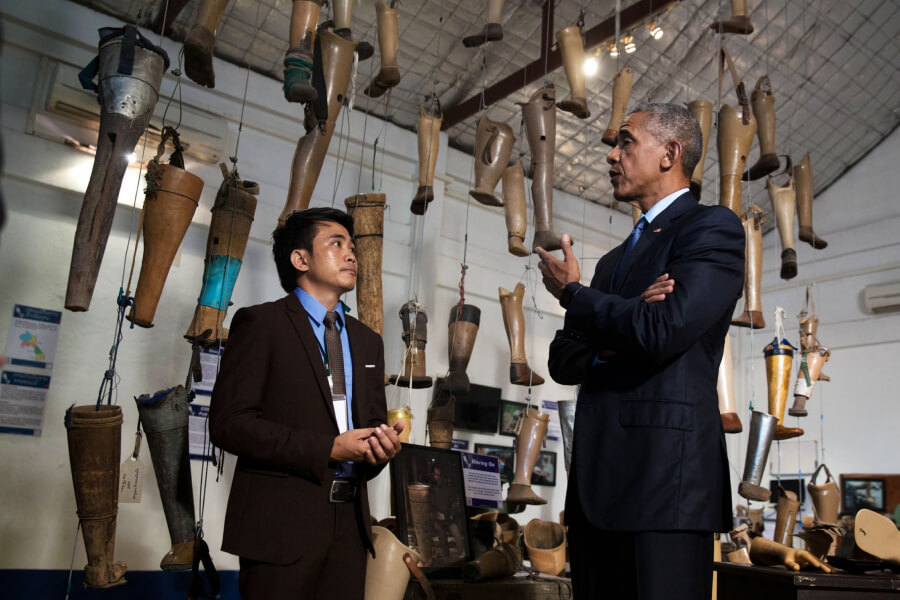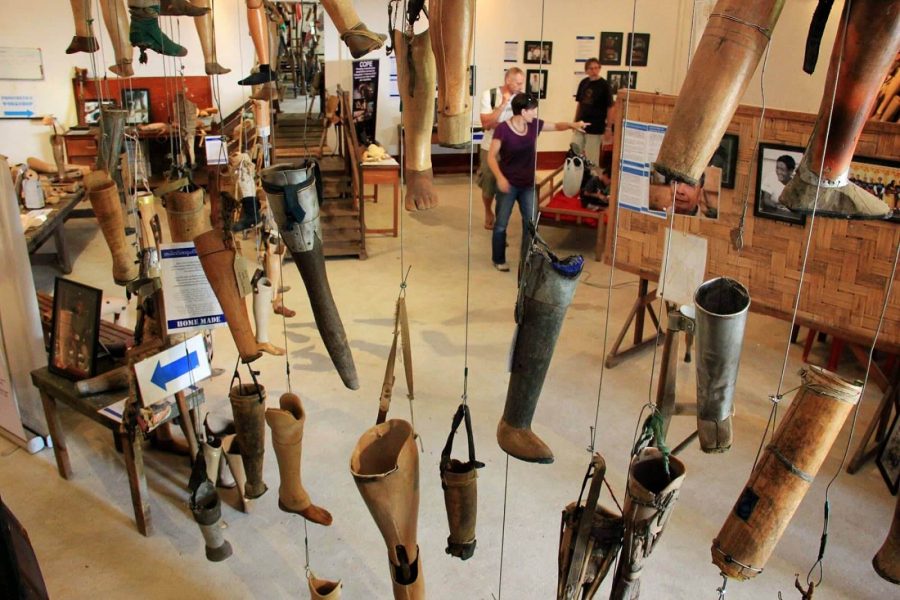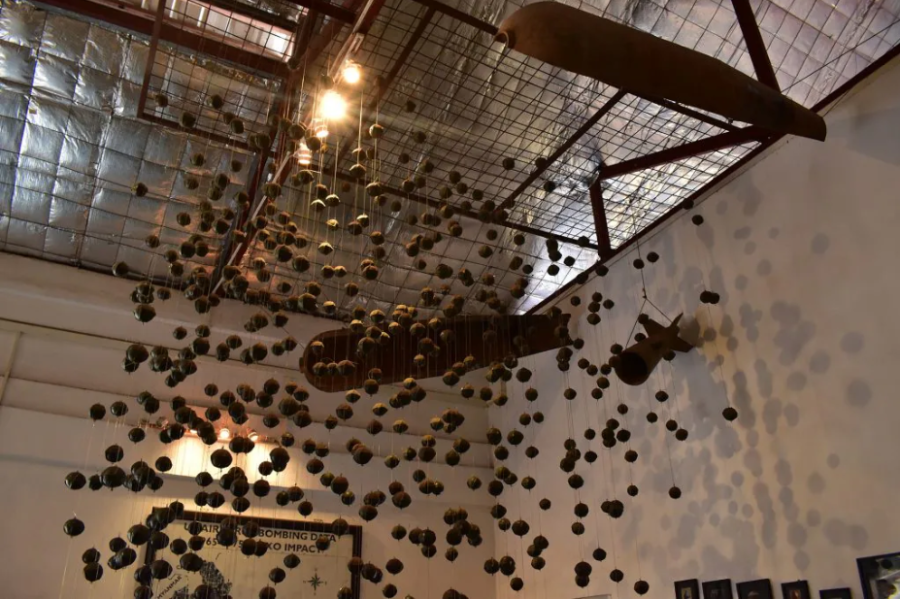COPE (Cooperative Orthotic and Prosthetic Enterprise) was born out of the urgent need to address this crisis. Their mission is to provide support and rehabilitation services to those affected by UXO incidents, offering not only physical healing but also the hope of renewed life. The work of COPE, an essential visit for those on Laos tours, represents a beacon of light in the face of ongoing challenges, a testament to the resilience of the human spirit, and a commitment to a safer and more inclusive future for the people of Laos.
COPE: The Genesis of COPE
In the late 1990s, a period when Laos was still grappling with the profound aftermath of the Vietnam War, the scars of conflict continued to mar the country's landscape. The remnants of the war, in the form of unexploded ordnance (UXO), were scattered across the nation, an ever-present danger to its people. It was against this backdrop of adversity that a group of extraordinary individuals, united by a shared vision of healing the wounds of war and bringing hope to those affected, joined forces. This collective determination gave birth to the Cooperative Orthotic and Prosthetic Enterprise, fondly known as COPE, in 1996.
The period between 1964 and 1973 was marked by Laos' entanglement in the tumultuous Vietnam War. In an effort to disrupt North Vietnamese supply lines, the United States conducted a covert bombing campaign over Laos, transforming it into the most heavily bombed country per capita in history. Approximately 2 million tons of munitions rained down on this land, but the tragedy didn't end there. An estimated 30% of these deadly payloads failed to detonate, turning Laos into a perilous minefield, where the threat of unexploded ordnance haunted the daily lives of its people.
The genesis of COPE was a response to this dire need for healing and support. The organization's founders, along with countless dedicated individuals, stood as beacons of hope in the face of daunting challenges. Their work and mission continue to resonate today, offering healing and transformation to those affected by the legacy of war in Laos. COPE's journey is a testament to the power of compassion and collective determination to make a positive impact on the lives of those who have suffered the most.
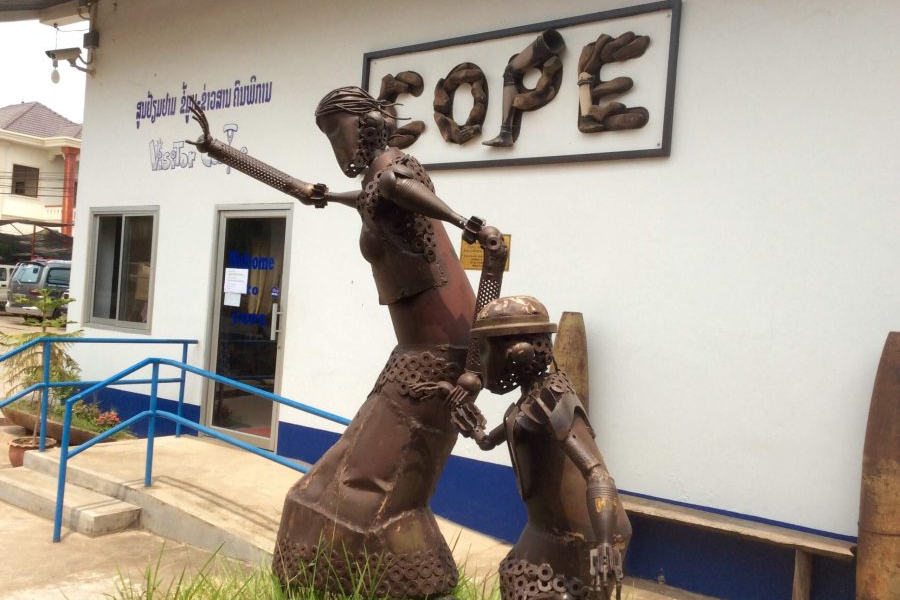
Legacy of the Vietnam War and COPE's Mission
In the aftermath of the Vietnam War, the neighboring country of Laos found itself grappling with a legacy of destruction and danger that would endure for generations. This dark chapter in history left more than 20,000 people in Laos as victims of unexploded ordnance (UXO) incidents, a staggering number that represents not just statistics but the profound impact on human lives, dreams, and entire communities scarred by the specter of hidden dangers lurking beneath the earth.
A significant contributor to this crisis is the widespread use of cluster munitions, which were dropped with devastating abundance during the conflict. An estimated 270 million cluster submunitions rained down on Laos as part of the Secret War, a covert operation during the broader Vietnam War. These small, seemingly innocuous devices, designed to disperse over a wide area, contain deadly payloads that can remain volatile for decades. As they litter the landscape, they become ticking time bombs, waiting for an inadvertent touch to unleash their devastating power.
The legacy of the Vietnam War in Laos is not confined to the pages of history; it is an ongoing and deeply entrenched challenge. The dangerous remnants of war continue to maim and claim lives, especially among the most vulnerable, such as children who may mistake these deadly devices for toys. The psychological and emotional scars left by this legacy are immeasurable, affecting not only the victims but their families and entire communities.
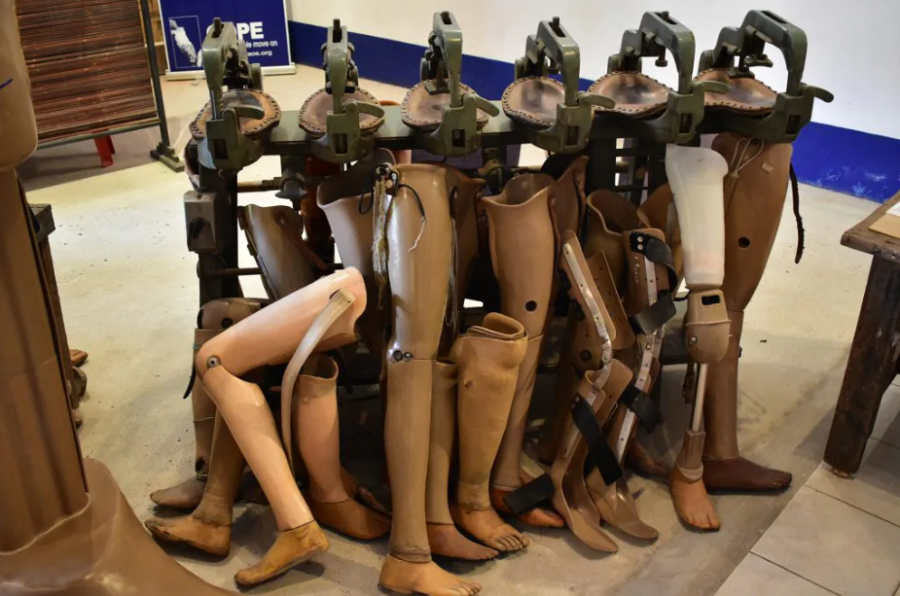
COPE Visitor Center - A Beacon of Healing and Hope
At the core of COPE's existence lies a profound commitment to the physical and emotional healing of those affected by the devastating legacy of unexploded ordnance (UXO) incidents.
Physical Rehabilitation: The toll of UXO incidents often includes life-altering injuries, with many survivors facing the loss of limbs. COPE's team of dedicated professionals steps in to provide orthotic and prosthetic devices meticulously customized to meet the unique needs of each individual. Beyond restoring mobility, these devices offer a renewed sense of independence, allowing survivors to regain their autonomy.
Physical Therapy: COPE recognizes that recovery transcends the fitting of prosthetics. Hence, the center offers comprehensive physical therapy programs designed to rebuild strength, enhance mobility, and improve the overall well-being of survivors. These programs aim to rekindle the flame of vitality, making it possible for individuals to engage fully in life once again.
Vocational Training: Empowering survivors to reclaim their lives, COPE extends its support by offering vocational training programs. These initiatives not only provide valuable skills but also open doors to employment opportunities, enabling individuals to regain their self-sufficiency and actively contribute to their communities. By equipping survivors with new skills and employment prospects, COPE fosters a sense of purpose and self-reliance.
Psychosocial Support: The emotional scars left by UXO incidents run deep, affecting the mental and emotional well-being of survivors. COPE recognizes this profound toll and offers essential psychosocial support. This support includes counseling and the establishment of peer support groups, creating a safe haven for survivors to share their experiences, cope with trauma, and embark on a path toward healing. It's in these moments of connection and understanding that survivors find solace and renewed hope.
While COPE's primary mission is to extend unwavering support to those within its reach, it also harbored a broader vision. In 2008, the organization set its sights on creating the COPE Visitor Center in Vientiane. This visionary center serves as an educational and advocacy hub, welcoming visitors from around the world. It offers them a unique opportunity to gain firsthand insights into the profound impact of UXO in Laos and the ongoing humanitarian efforts to address this challenge. Through educational exhibits and interactive displays, the COPE Visitor Center sheds light on the hidden dangers that continue to affect Laotian communities and the tireless efforts to heal and rebuild lives. By inviting global participation and support, this center serves as a beacon of awareness and advocacy, bridging borders to create a safer and more inclusive future for the people of Laos.
COPE Visitor Center: A Beacon of Healing and Hope
In a world often marred by persistent challenges and adversity, COPE stands as an inspiring testament to the limitless potential of human resilience and compassion. It emerged from the shadow of conflict and the haunting specter of unexploded ordnance, becoming a radiant beacon of hope and healing for countless individuals.
When we delve into the remarkable odyssey of COPE, it becomes evident that adversity, no matter how overwhelming, can be met with unwavering determination and boundless empathy. COPE transcends being merely an organization; it becomes a symbol of human resilience, a testament to the indomitable spirit of compassion, and a harbinger of a brighter future for all those it touches.
Within the walls of the COPE Visitor Center in Vientiane, the extraordinary work of COPE takes center stage. Here, hope flourishes, and lives are profoundly transformed.
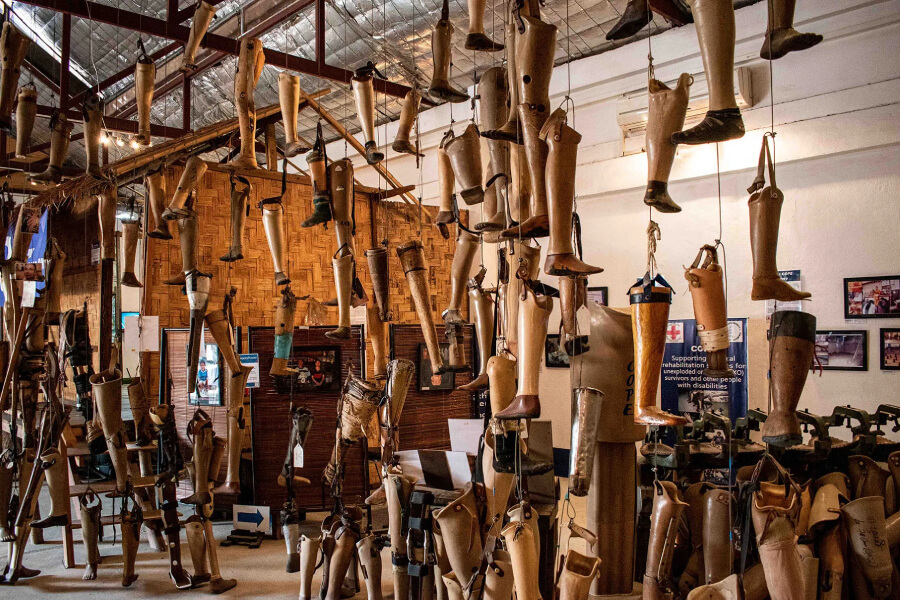
COPE Visitor Center in Vientiane: Opening Hours and Ticket Prices
Opening Hours
The COPE Visitor Center warmly welcomes visitors every day from 8:30 AM to 4:00 PM. This daily schedule provides ample opportunities for visitors to explore the center's exhibits and gain a deeper understanding of the challenges faced by those impacted by unexploded ordnance and the life-changing support provided by COPE.
Ticket Prices
One of the most remarkable aspects of the COPE Visitor Center is that it offers free admission to all visitors. This inclusivity reflects the center's commitment to raising awareness about the challenges faced by those affected by unexploded ordnance and the efforts made to provide them with prosthetic limbs and rehabilitation services.

